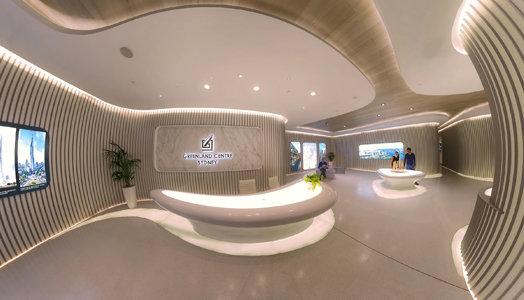By Pari Syal
Photography: Brett Boardman & Peter Murphy; courtesy LAVA
 |
| . |
Working with a
design that can maximize the architectural vocabulary with minimum application
of material, two Australian architects design a simple yet engaging commercial
space.
It isn't everyday that an interior stops you in your tracks with a ‘wow’; yet it isn’t
easy either to come up with something new each time you have to showcase a set
of requisites for your client. Australian architects, LAVA – the Laboratory of
Visionary Architecture in collaboration with PTW have risen to the challenge of
transforming what could have been a boring estate office selling commercial and
residential fit-outs into an interesting connect that leisurely spills the
beans – enticing new estate buyers.
.jpg) |
| . |
Combining digital workflow, nature’s structural principles and
the latest digital fabrication technologies with the aim of achieving more
(architecture) with less (material/ energy/ time/ cost), the architects have
designed an
organically-shaped display suite to market the Sydney Greenland Centre on
Sydney’s old Water Board site.
.jpg) |
| . |
.jpg) |
| . |
The lobby of the
1960s Water Board building now sports an undulating interior envelop with free-form furniture and curvy walls and ceilings. The fluid space features white
terrazzo floors, illuminated timber desks, and walls lined with white leather
and timber battens. Continuous lighting ribbons create a luminous and airy
environment.
.jpg) |
| . |
The latest
technologies include GRP - a lightweight, strong material that can be formed
into fluid shapes. Parametric modelling and rapid prototyping mean that the
design went straight from a 3D computer model to the fabrication workshop,
where the reception and display desks were CNC cut and coated.
.jpg) |
| . |
Says Chris
Bosse, director of LAVA, “People in the 21st century are looking for spaces
that link them to nature, and the forms found in nature - waves, canyons,
clouds; together this can create beautiful, efficient and connective spaces.”
.jpg) |
| . |
While LAVA
purports to explore frontiers
that merge future technologies with the patterns of organization found in
nature, believing that this will result in a smarter, friendlier, more socially
and environmentally responsible environments, one wonders whether there could
be other more engaging methods to resonate with nature instead of
mimicking/simulating forms? Wouldn't a real connect (however big or small)
between nature and technology be more appropriate?

No comments :
Post a Comment